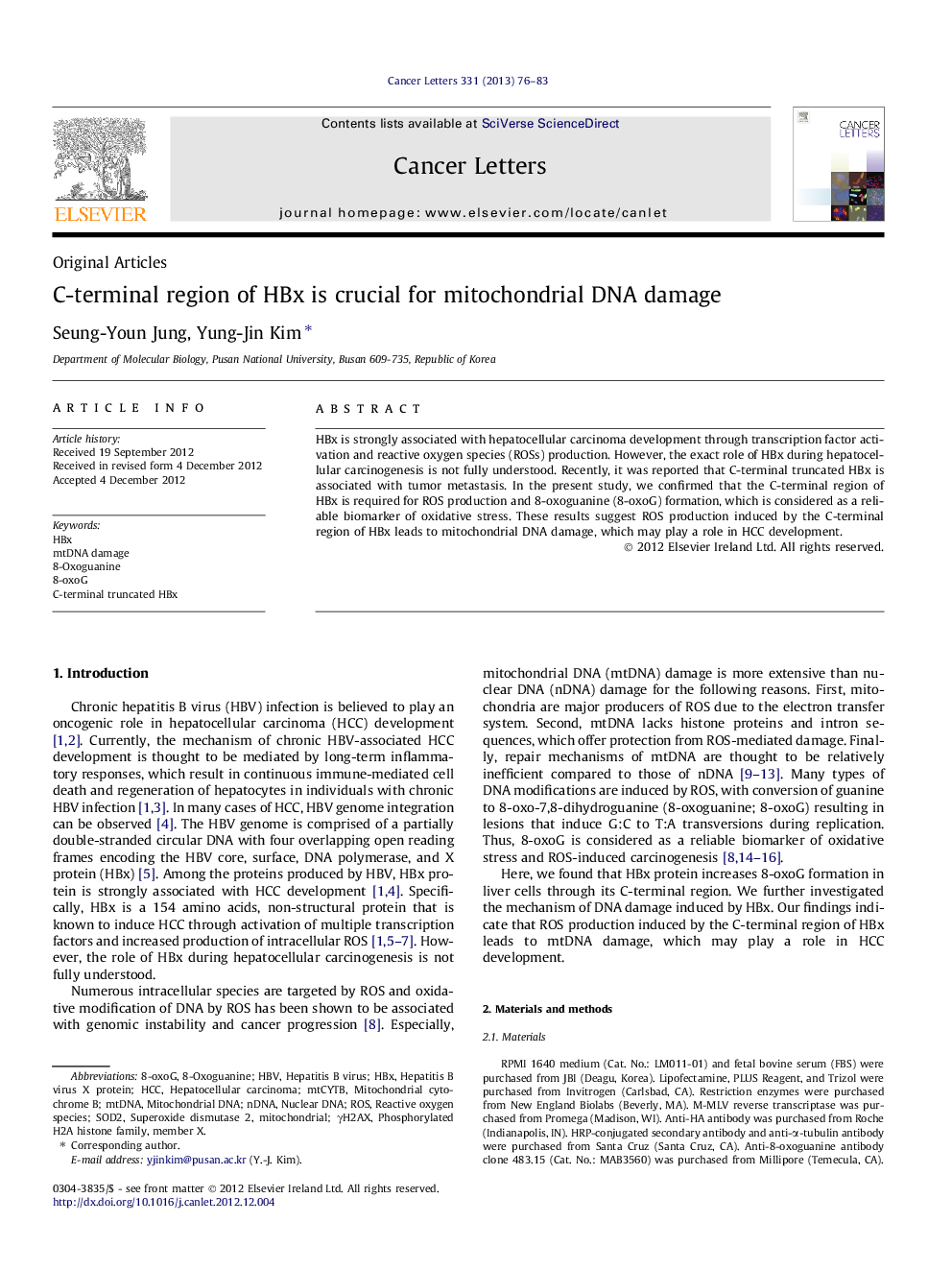| Article ID | Journal | Published Year | Pages | File Type |
|---|---|---|---|---|
| 2113072 | Cancer Letters | 2013 | 8 Pages |
HBx is strongly associated with hepatocellular carcinoma development through transcription factor activation and reactive oxygen species (ROSs) production. However, the exact role of HBx during hepatocellular carcinogenesis is not fully understood. Recently, it was reported that C-terminal truncated HBx is associated with tumor metastasis. In the present study, we confirmed that the C-terminal region of HBx is required for ROS production and 8-oxoguanine (8-oxoG) formation, which is considered as a reliable biomarker of oxidative stress. These results suggest ROS production induced by the C-terminal region of HBx leads to mitochondrial DNA damage, which may play a role in HCC development.
► HBx produces 8-oxoguanine, a biomarker of oxidative DNA damage, in liver cells. ► HBx induces ROS production and mitochondrial DNA damage. ► HBx does not induce H2AX phosphorylation, a nuclear DNA damage marker. ► The C-terminal region of HBx is required for ROS production and mtDNA damage. ► ROS production induced by the C-terminal region of HBx leads to mtDNA damage.
